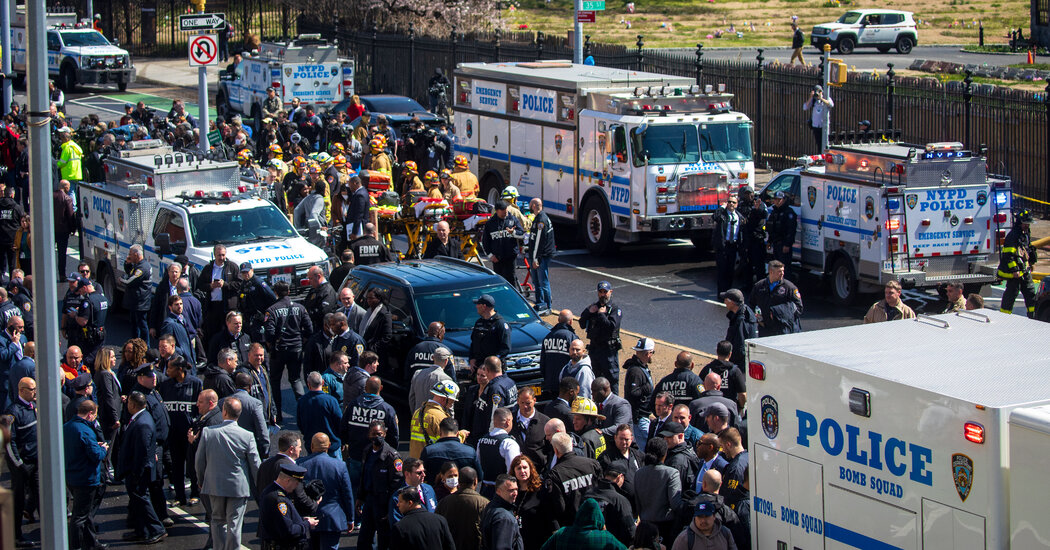Back at 36th Street, police officers and firefighters were descending into the station. They blocked access in and out, unaware that the gunman was already gone. The casualties were quickly tallied — 10 wounded by gunshots, none gravely. It was an outcome as welcome as it was unlikely, considering that someone had just fired 33 shots into a locked metal tube crowded with trapped targets, and had then vanished.
Mayor Eric Adams was uptown at his Gracie Mansion residence, attending a Covid-19 briefing over Zoom when he learned of the shooting. He had tested positive for the coronavirus two days earlier, and had been restricted to his home since then.
A former New York City police captain, his first instinct was to rush to the scene, but members of his staff urged otherwise. Instead, a command center was set up in a different room. Soon, he said later, he was in near-constant contact with Police Commissioner Keechant Sewell.
The news swept across the city and far beyond. Panicked parents texted from across the country: The news said Brooklyn, are you OK? Helicopters took to the skies over Sunset Park, and the city blasted alerts to smartphones asking people to avoid the neighborhood.
But the gunman seemed to have simply walked away, making his way uphill from Fourth Avenue to Seventh Avenue, where, a law enforcement official said, he boarded a bus that carried him the 10 or so densely populated blocks to another subway station. At 9:15 a.m., he descended the stairs at that station, the 7th Avenue-9th Street stop in Park Slope, where an F or G train could take him out to Coney Island or into Manhattan or Queens.
At the 36th Street station, the items the gunman had left behind proved to be a trove of clues. A cache of fireworks, a gun, a container of gasoline, a torch — and bank cards and the key to a U-Haul van. The gun was quickly traced to a purchase a decade earlier in Ohio, sold to a man named Frank Robert James.
Check out our Latest News and Follow us at Facebook
Original Source
